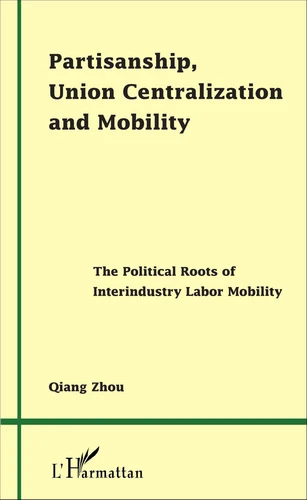Partisanship, Union Centralization and Mobility. The Political Roots of Interindustry Labor Mobility
Par :Formats :
Disponible dans votre compte client Decitre ou Furet du Nord dès validation de votre commande. Le format PDF est :
- Compatible avec une lecture sur My Vivlio (smartphone, tablette, ordinateur)
- Compatible avec une lecture sur liseuses Vivlio
- Pour les liseuses autres que Vivlio, vous devez utiliser le logiciel Adobe Digital Edition. Non compatible avec la lecture sur les liseuses Kindle, Remarkable et Sony
 , qui est-ce ?
, qui est-ce ?Notre partenaire de plateforme de lecture numérique où vous retrouverez l'ensemble de vos ebooks gratuitement
Pour en savoir plus sur nos ebooks, consultez notre aide en ligne ici
- Nombre de pages242
- FormatPDF
- ISBN978-2-14-000882-5
- EAN9782140008825
- Date de parution01/05/2016
- Copier Coller01 page(s) autorisée(s)
- Protection num.Digital Watermarking
- Taille4 Mo
- ÉditeurL'Harmattan
Résumé
This book analyzes the relationship between the partisanship of governments and the corresponding levels of interindustry labor mobility (ILM). From a general equilibrium model, the book shows that high levels of ILM induce greater class solidarity among labor owners while weakening the solidarity among capital owners. The reverse holds for low levels of ILM [?]. The book develops and tests a series of conditional hypotheses, and finds that Left governments will be associated with higher levels of ILM than Right governments when the level of domestic union centralization is low.
It argues and shows that one mechanism through which partisan governments can cause the changes of interindustry labor mobility levels is the manipulation of certain labor market policies.
It argues and shows that one mechanism through which partisan governments can cause the changes of interindustry labor mobility levels is the manipulation of certain labor market policies.
This book analyzes the relationship between the partisanship of governments and the corresponding levels of interindustry labor mobility (ILM). From a general equilibrium model, the book shows that high levels of ILM induce greater class solidarity among labor owners while weakening the solidarity among capital owners. The reverse holds for low levels of ILM [?]. The book develops and tests a series of conditional hypotheses, and finds that Left governments will be associated with higher levels of ILM than Right governments when the level of domestic union centralization is low.
It argues and shows that one mechanism through which partisan governments can cause the changes of interindustry labor mobility levels is the manipulation of certain labor market policies.
It argues and shows that one mechanism through which partisan governments can cause the changes of interindustry labor mobility levels is the manipulation of certain labor market policies.




